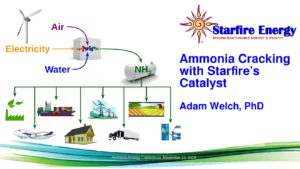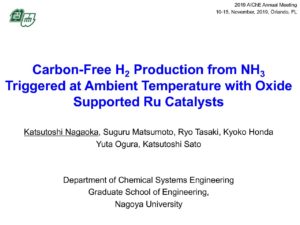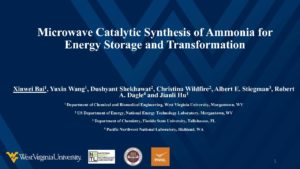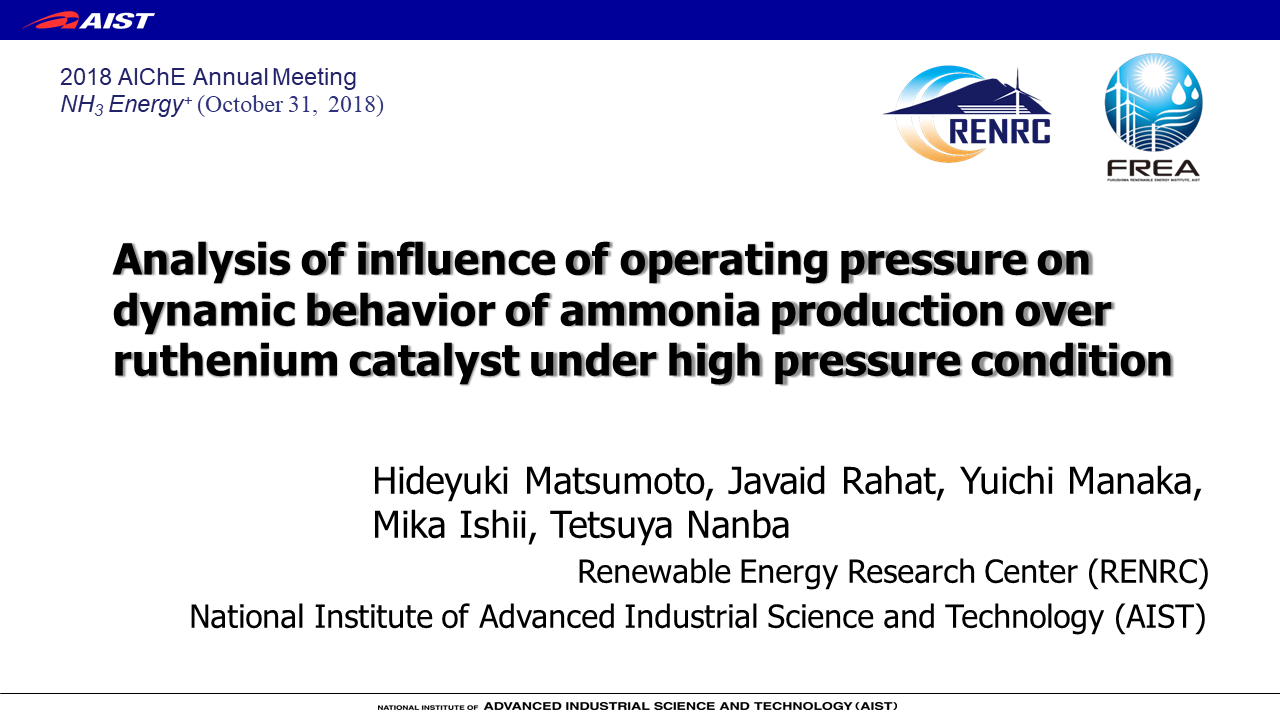Presentation
Electrochemical Promotion of Ammonia Synthesis with Proton-Conducting Ceramic Fuel Cells -Function of Electrode Interface for Ammonia Formation Reaction-
The advance of efficient and economical energy carrier technology is an important challenge in terms of storage and transport of hydrogen fuels produced from renewable energy. Ammonia is a promising candidate of energy carrier because of high energy density and easy liquefaction as well as a carbon-free fuel.1 Electrochemical synthesis has a potential for an efficient ammonia production in comparison with the industrial Haber–Bosch process. In our previous study, we observed the improvement of electrochemical synthesis of ammonia using iron-based electrode catalyst such as K-Al-Fe-BaCe0.9Y0.1O3 (BCY).2 In the study, basically, H2 decomposition occurs to form protons in the anode side,…





